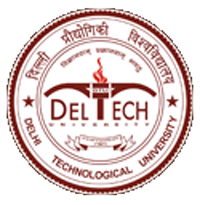Please use this identifier to cite or link to this item:
http://dspace.dtu.ac.in:8080/jspui/handle/repository/21739Full metadata record
| DC Field | Value | Language |
|---|---|---|
| dc.contributor.author | SAXENA, DHRUV SHANKAR | - |
| dc.date.accessioned | 2025-06-19T06:27:55Z | - |
| dc.date.available | 2025-06-19T06:27:55Z | - |
| dc.date.issued | 2025-06 | - |
| dc.identifier.uri | http://dspace.dtu.ac.in:8080/jspui/handle/repository/21739 | - |
| dc.description.abstract | The final mile of delivery the very last step in delivering a product to the customer—has one of the most intricate and costly components of the logistics chain within the B2C space. As online business has evolved to meet customer demands. Consumers now expect not only rapid shipping but also accuracy, adaptability, and convenience in when and how exactly their orders will be delivered. This segment of the supply chain continues to be marred by such problems as delivery failures, traffic jams, unproductive routing, and environmental factors, all of which present major challenges for logistics companies. Even though there has been significant progress in other supply chain management domains LMD still lags. Industry 4.0-related technologies like real-time monitoring, route planning through AI, and self- driving cars have the potential to address these issues. These solutions could potentially reduce costs, enhance dependability, and enhance the customer experience. But even these technologies have been implemented in an unbalanced manner. Most businesses are hindered by factors such as high capital expenses, technological constraints, change aversion, and strategy ambiguity. This research delves into such challenges in detail, seeking to determine and comprehend the key impediments to embracing Industry 4.0 in LMD. Through the integration of Total Interpretive Structural Modelling (TISM) and MICMAC analysis, the research depicts such impediments in a schematic structure, illustrating how they intersect and what is most important. This allows for organizations to tackle the right issues first in strategizing for improvement. The significance of this research lies not merely in its theory contribution but also in its practical implication. Resolving last mile issues is central to making delivery systems more sustainable, responsive, and customer oriented. As the digital economy expands and green concerns deepen, overhauling this terminal phase of delivery is more imperative than ever before. The findings presented can help inform improved decision making among logistics practitioners, business executives, and policy makers endeavoring to update urban logistics. | en_US |
| dc.language.iso | en | en_US |
| dc.relation.ispartofseries | TD-7975; | - |
| dc.subject | LAST MILE DELIVERY | en_US |
| dc.subject | INDUSTRY 4.0 | en_US |
| dc.subject | LOGISTICS 4.0 | en_US |
| dc.subject | DIGITAL TRANSFORMATION | en_US |
| dc.subject | STRUCTURAL MODELING | en_US |
| dc.subject | MICMAC ANALYSIS | en_US |
| dc.subject | TISM | en_US |
| dc.title | MODELLING OF CRITICAL BARRIERS TO INDUSTRY 4.0 IMPLEMENTATION IN LAST MILE DELIVERY: TISM BASED APPROACH | en_US |
| dc.type | Thesis | en_US |
| Appears in Collections: | M.E./M.Tech. Mechanical Engineering | |
Files in This Item:
| File | Description | Size | Format | |
|---|---|---|---|---|
| Dhruv Shankar Saxena M.Tech..pdf | 3.56 MB | Adobe PDF | View/Open |
Items in DSpace are protected by copyright, with all rights reserved, unless otherwise indicated.



